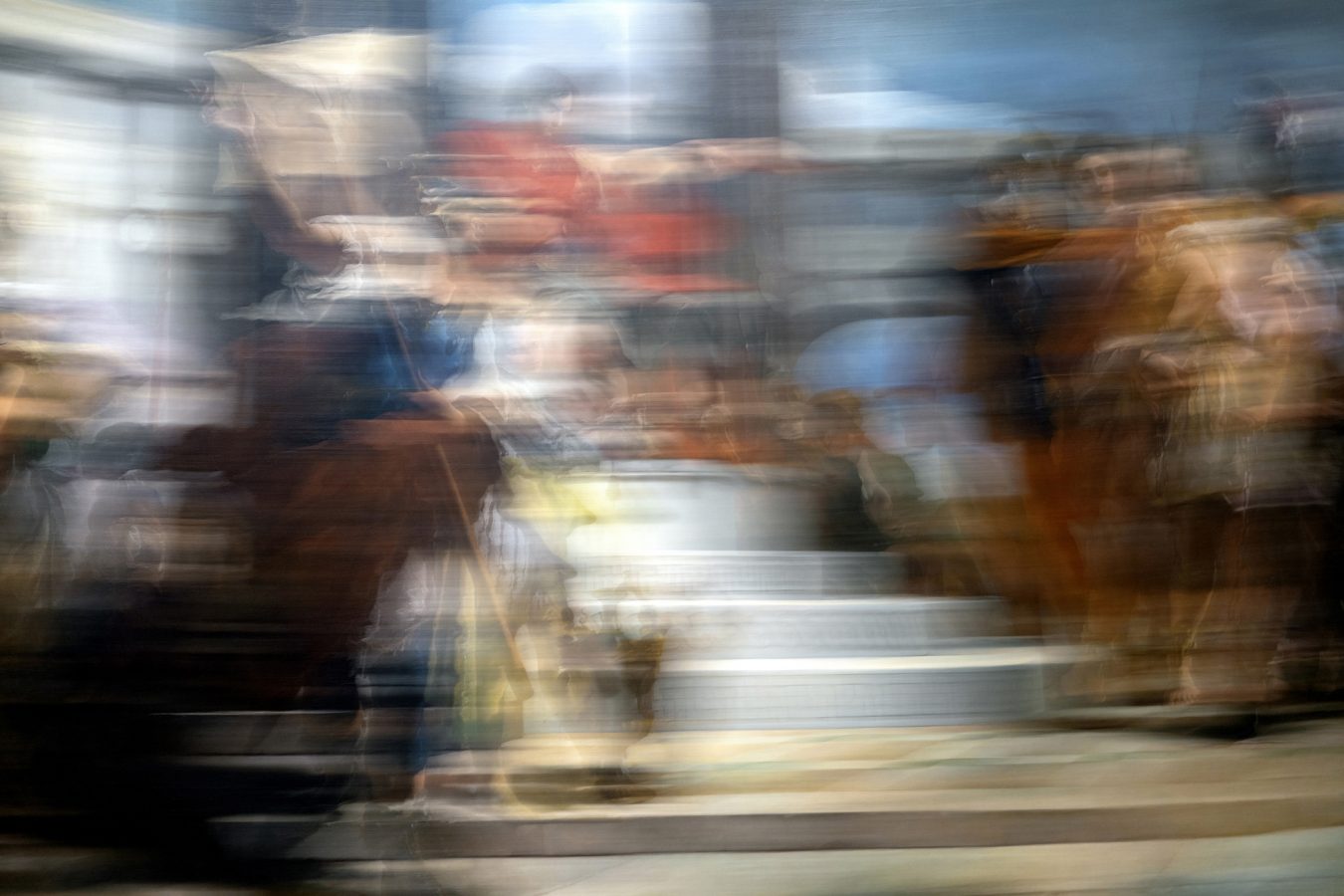The effect is initially subtle, but it’s surprisingly affecting: there, among the Walters’ staid parade of Italian Renaissance altarpieces and solemn saints, a new addition looks meaningfully out at us. Set against a background of glowing copper leaf, a young Black man offers a bottle of milk and a jar of honey. It’s a work that evokes both an ancient, Biblical sense of surfeit and—when we read its title, Are You Being Served?—a frank skepticism about the American project and its ability to provide for all of its residents, regardless of race.
Created by Stephen Towns in 2014, the painting is the first of six contemporary artworks (five of which are by Maryland-based artists) currently installed among the museum’s Renaissance and Baroque objects. Curated by Joaneath Spicer with assistance from Chandi Kelley, and entitled Activating the Renaissance, this modest but intelligent exhibition smoothly achieves its stated aim. The juxtapositions suggest a range of partial parallels and meaningful differences, centuries-old works read in new ways, and the additions offer a meaty, if occasionally uneven, sampler of recent artistic experiments.
Does all of this ring a bell? It might well. Back in 1995, Spicer co-curated (with Lisa Corrin) Going for Baroque, which also involved a juxtaposition of works by contemporary artists and Old Masters. Admittedly, that show was larger in scope; it involved 18 practicing artists, including Frank Stella and Cindy Sherman, and was accompanied by a catalogue. This year’s iteration is leaner, but it also aims to enliven the Walters’ European holdings and to make them feel newly relevant. The goal, as George Ciscle put it in the 1995 catalog, is still to put works “in conversation so the objects can illuminate one another and draw out aspects of each which otherwise might go unconsidered.”
Something like that undeniably takes place in the first room of the show. Flanked by ranks of Quattrocento holy figures, Towns’ protagonist feels at once at home and strikingly distinct. In one sense, his lively gesture and his focused gaze position him as the heir of what John Shearman once called a developing interactivity, or transitivity, in Italian Renaissance art. A bit like Correggio’s Pontius Pilate, who turns inquiringly towards us and seeks our counsel, this man actively involves us, waiting for our response.
The reverent tenor of the adjacent Renaissance altarpieces rubs off on him, too. His gesture feels almost eucharistic, and his method of lifting the tray gives way to a more abstract sense of spiritual uplift. And yet, this is neither priest nor saint, and his value is not predicated upon martyrdom or miracles; rather, his worth is taken for granted, even as the ability of American society to treat its marginalized fairly is thrown into question. Thus, the declarative and dogmatic imagery of the 15th century give way to something more provisional and open-ended, and the certain promise of heaven yields to the contested form of this unequal world.










